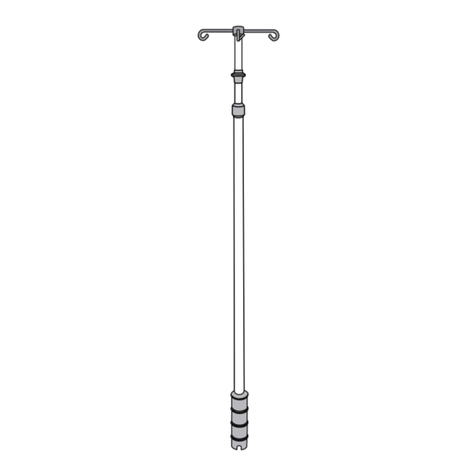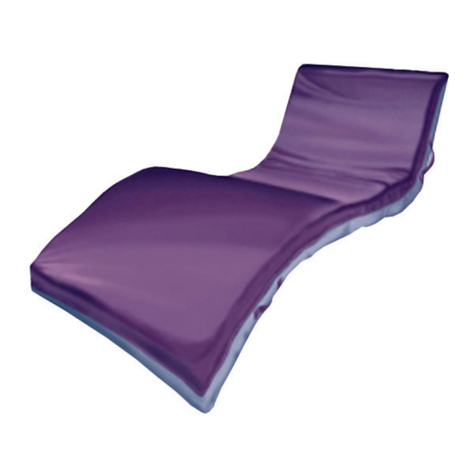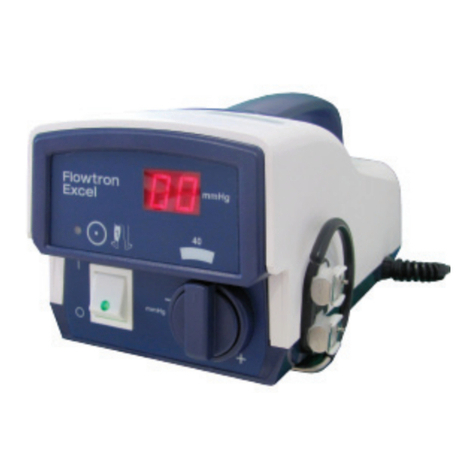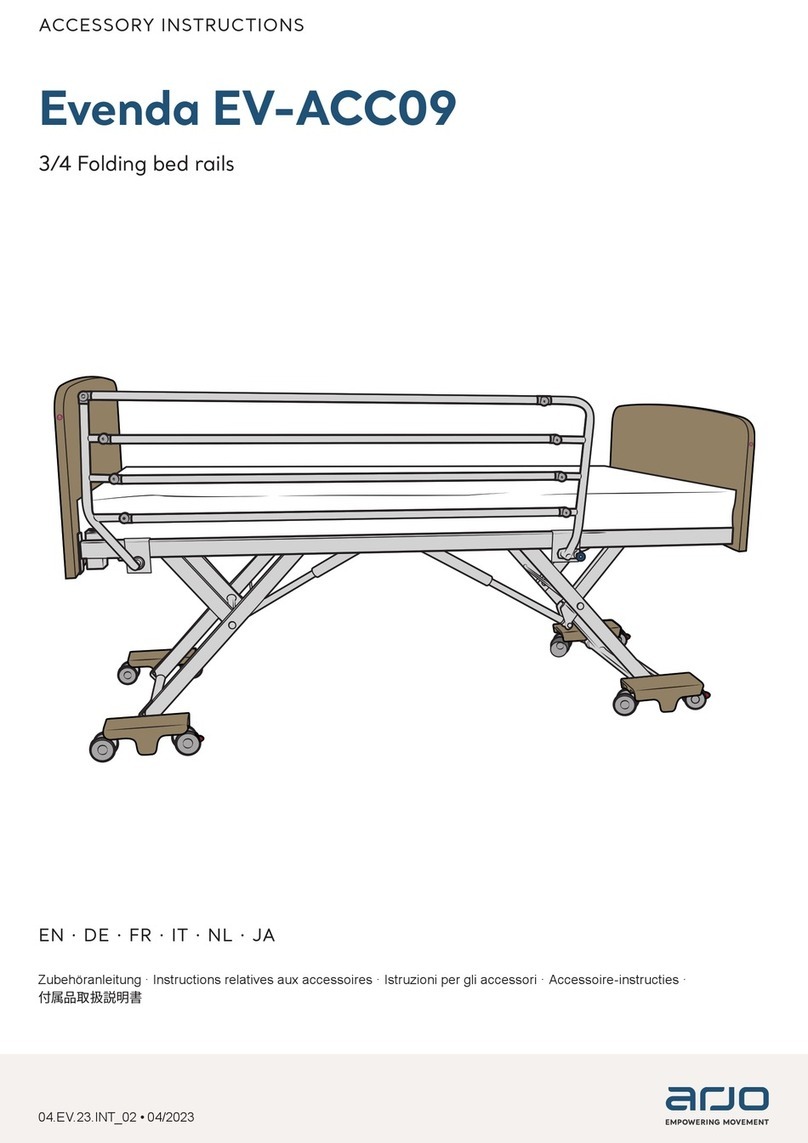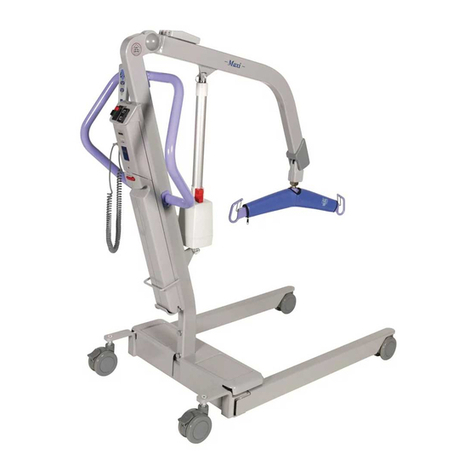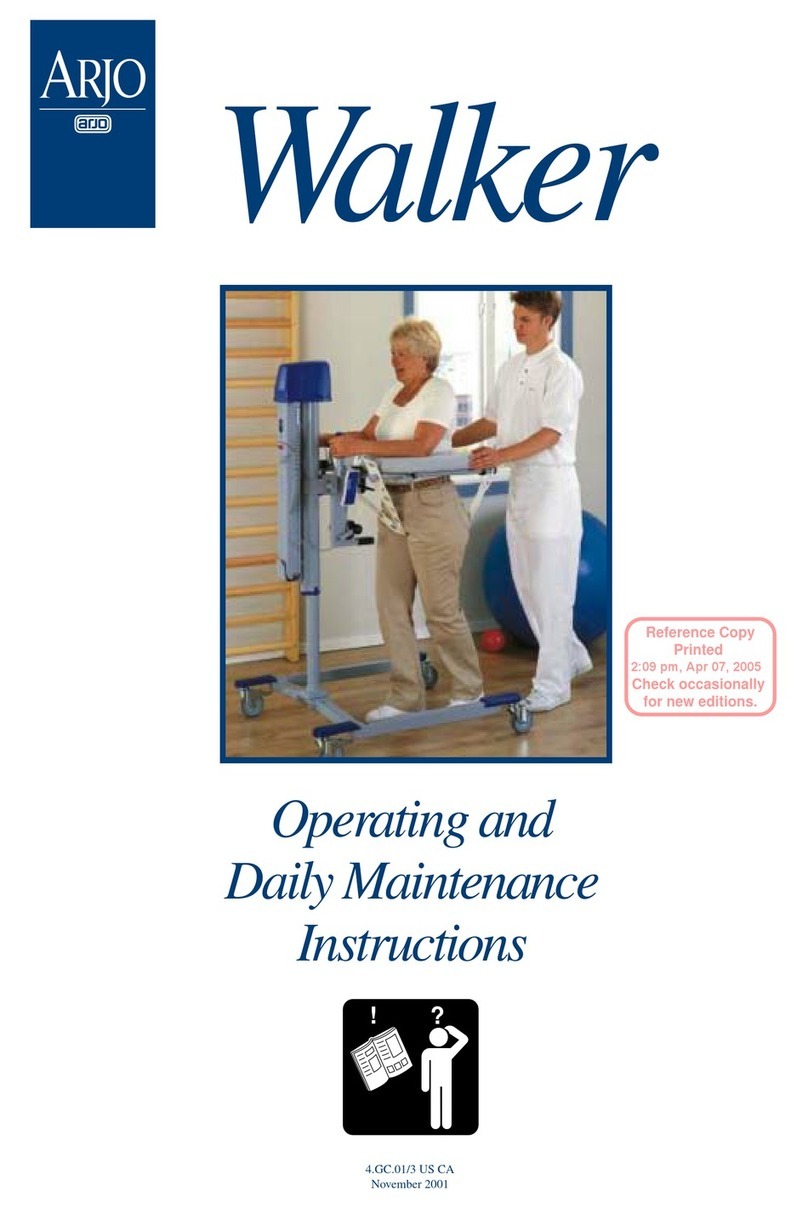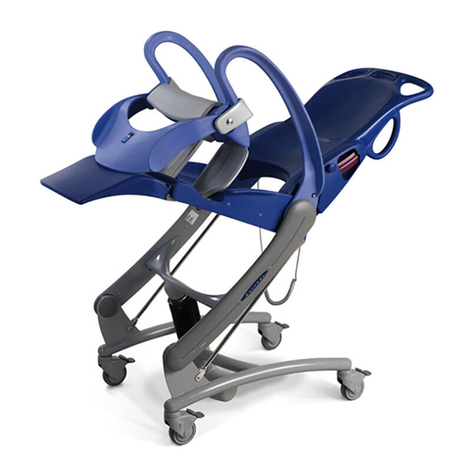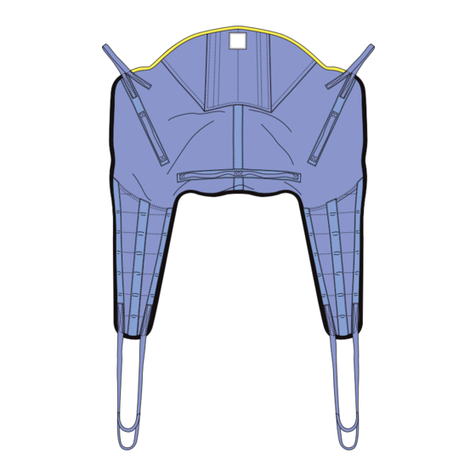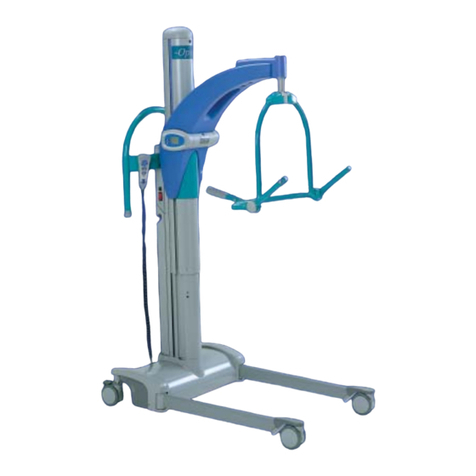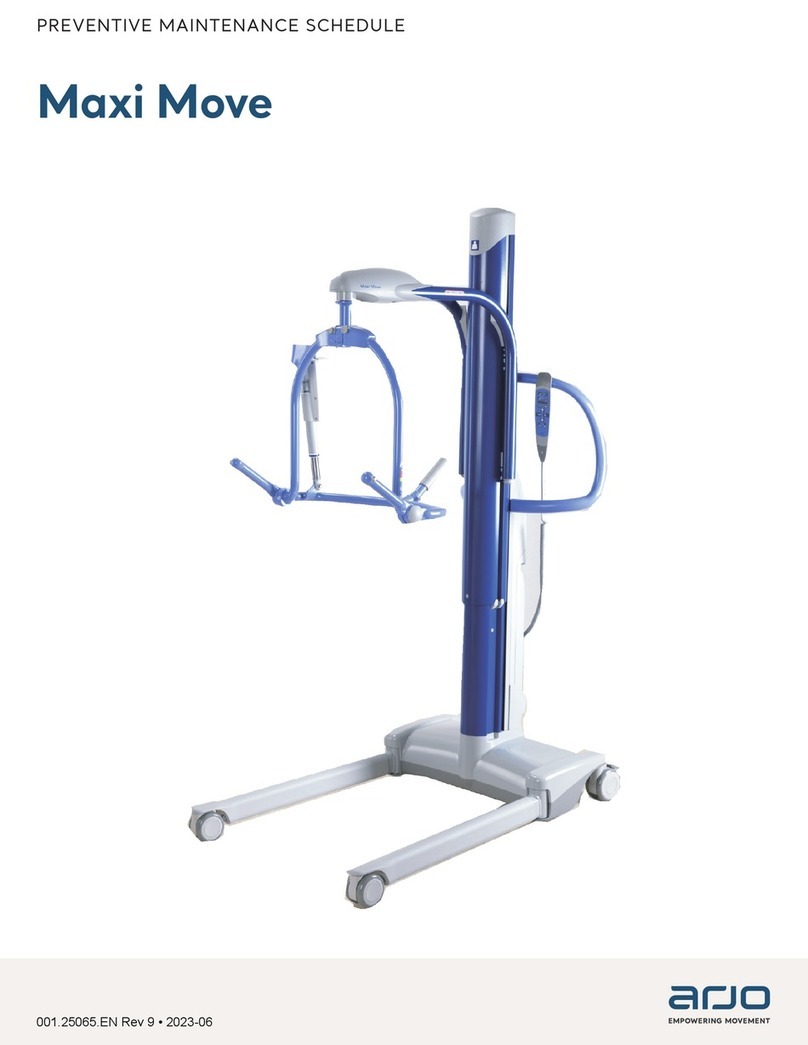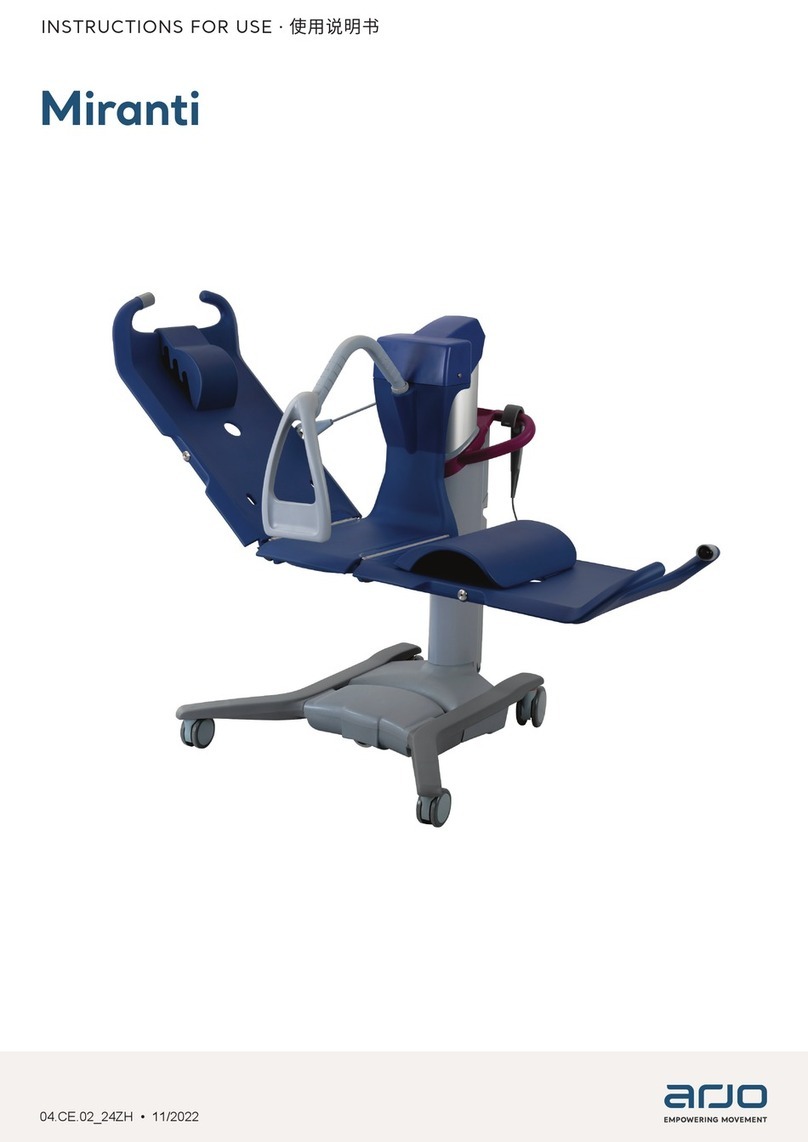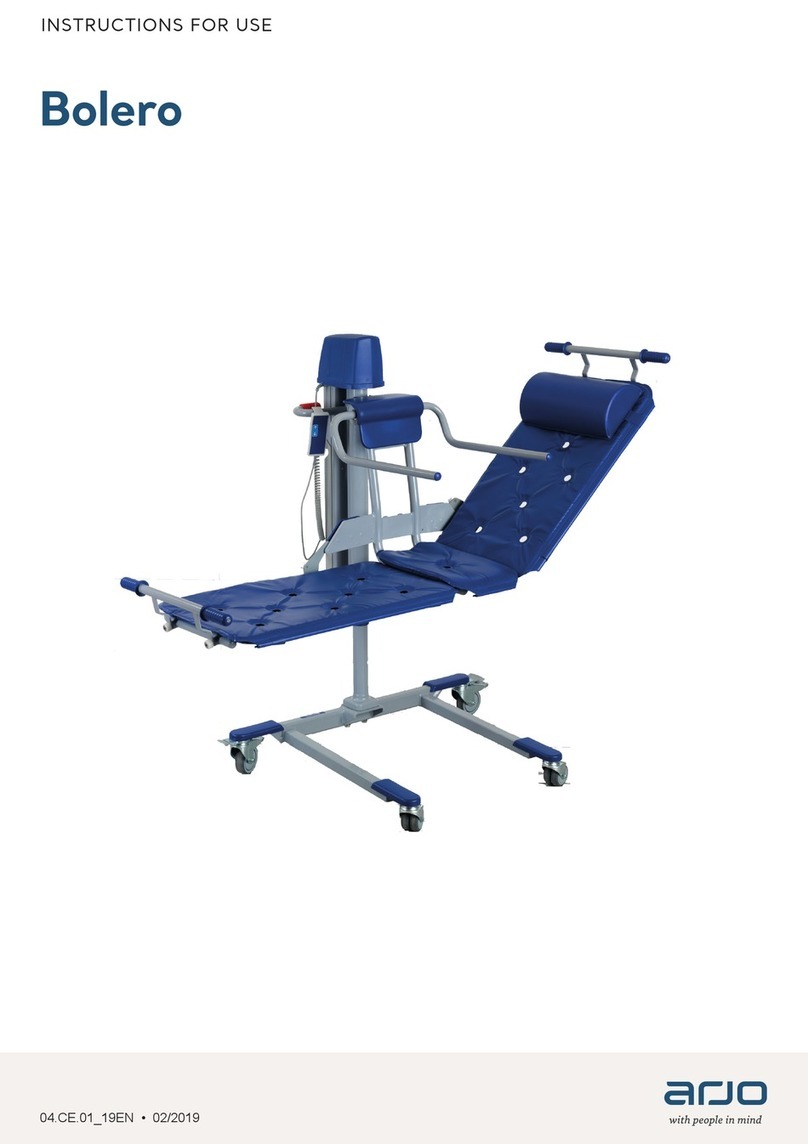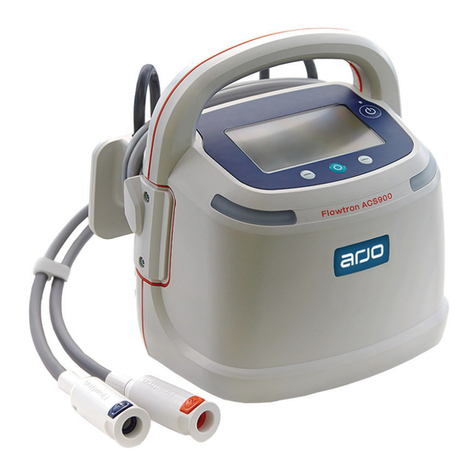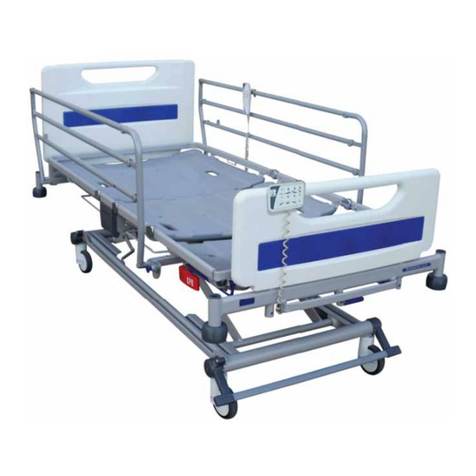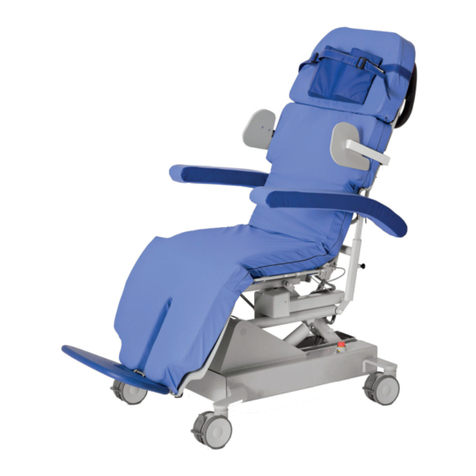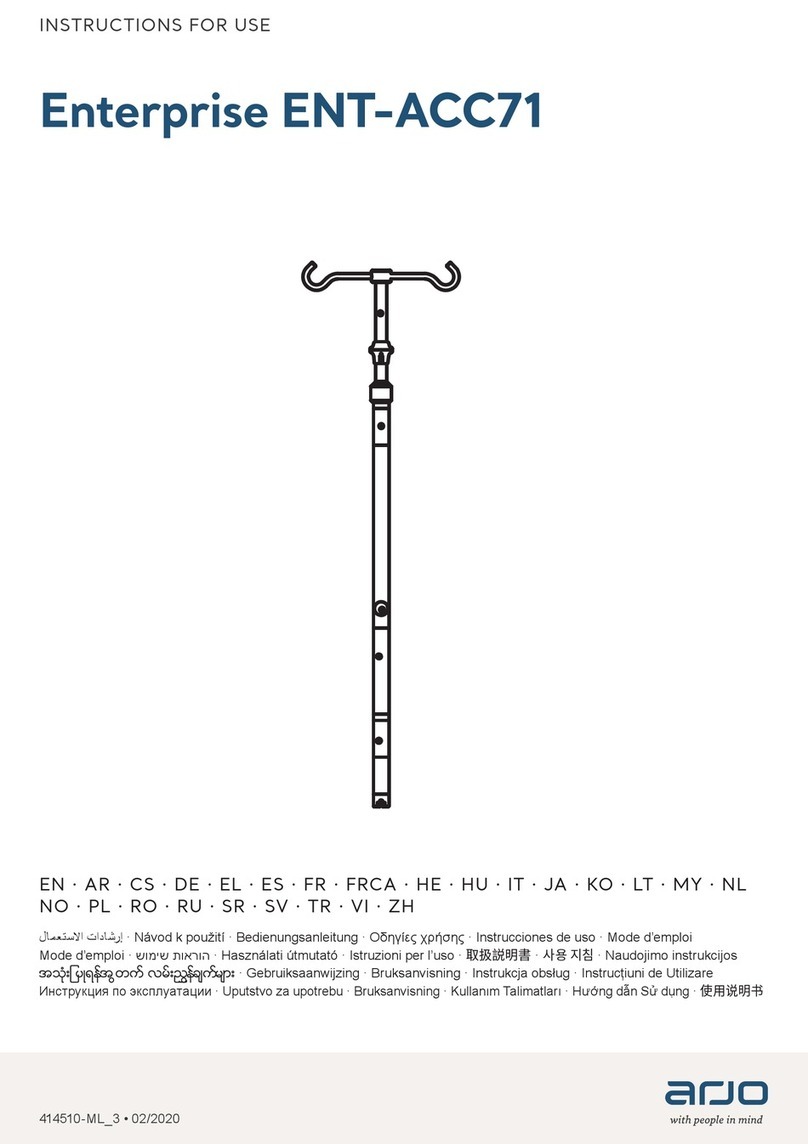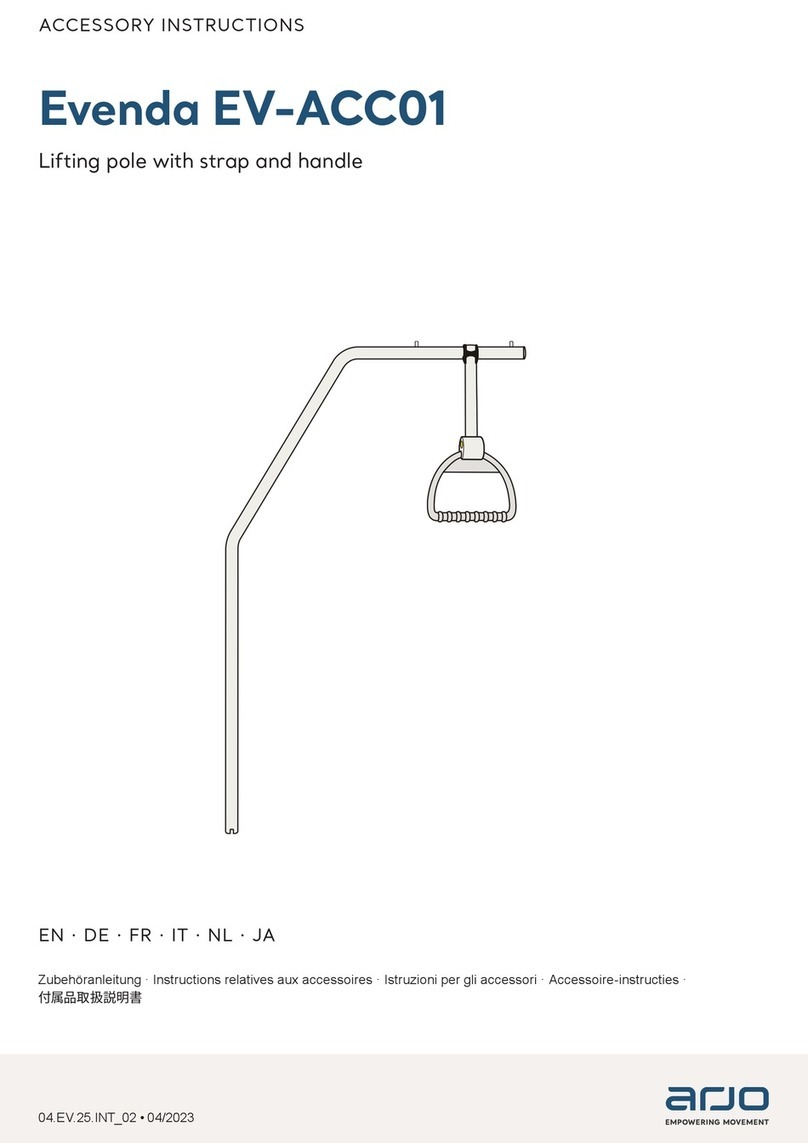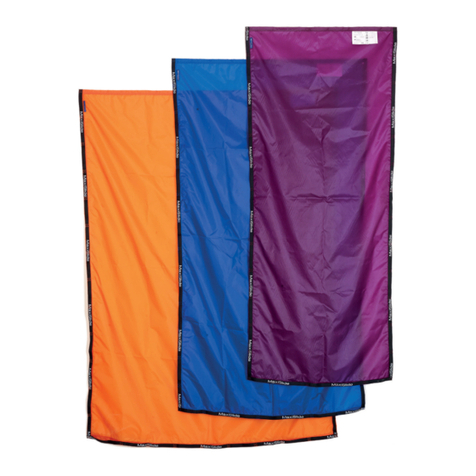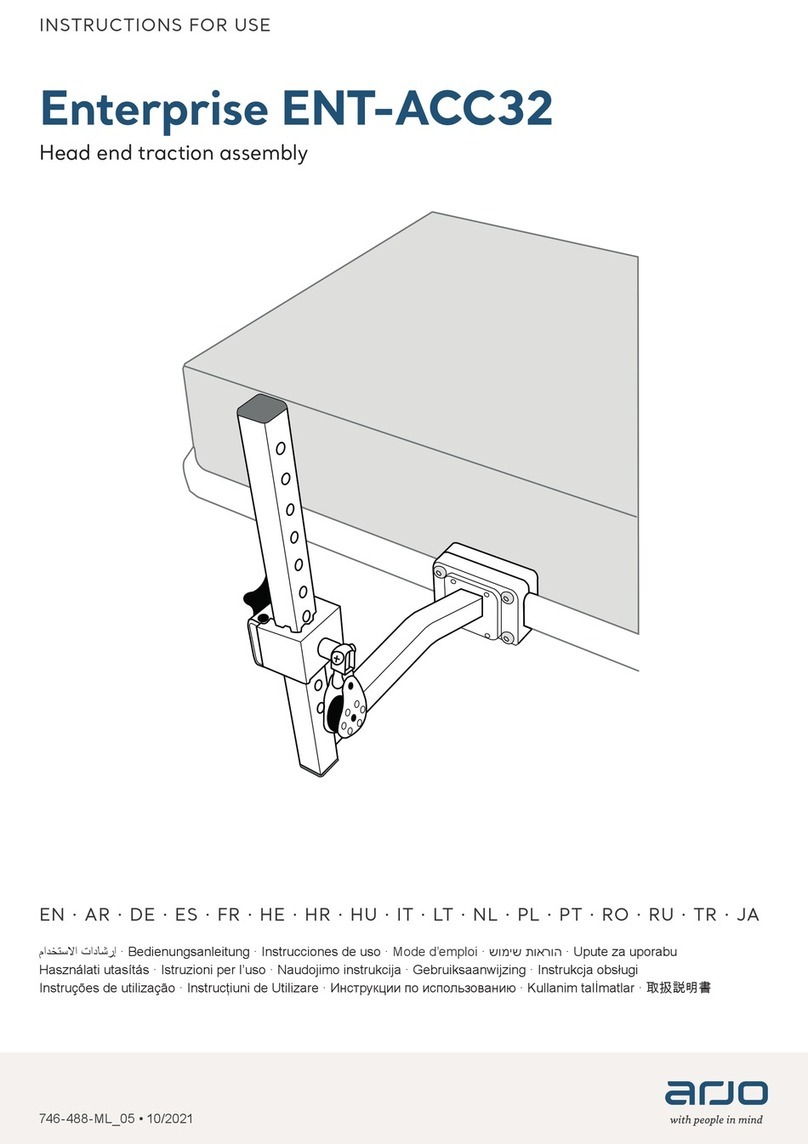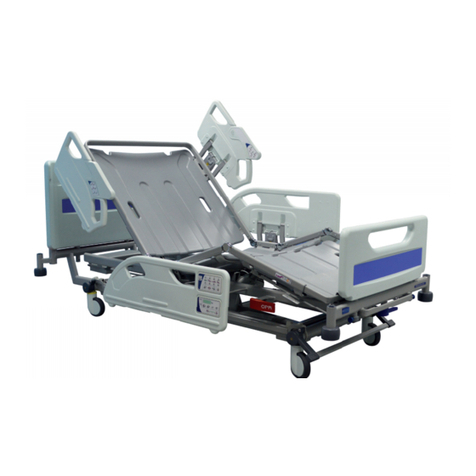
4
Intended use
Intended use for Sara Plus
The Sara Plus is a standing and raising aid for short
transfers of residents/patients e.g. raising from bed and
transfer to wheelchairs, or from wheelchair to toilet.
This equipment is also suitable for rehab exercises
including walking training when the footboard and
kneepad are removed. Transfers with the Sara Plus are
made indoors in the resident’s/patient’s room, treatment
rooms, in communal areas or in a bathroom.
The Sara Plus is intended to be used in hospitals,
nursing homes or other health care facilities for different
categories of residents/patients.
The Sara Plus shall always be handled by a trained
caregiver, continuously attending to the resident/patient,
and in accordance with the instructions outlined in the
Instructions for Use (IFU).
The Sara Plus is intended to be used with specifically
designed Arjo slings.
When using the transfer/walking sling for the transfer,
the Safe Working Load is 140 kg (308 lbs). When using
the same sling for walking practice the Safe Working
Load is 190 kg (420 lbs).
The Sara Plus should only be used for the purpose
specified in the IFU. Any other use is prohibited.
Patient assessment
Before attempting to use Sara Plus, a full clinical
assessment of the resident/patient condition and
suitability must be carried out by a qualified person.
The Sara Plus is intended IRU the resident/patient who:
• Sits in a wheelchair
• Is able to partially bear weight on at least one leg
• Has some trunk stability
• Is dependent on the caregiver in most situations
• Needs mobility-maintaining standing exercises
When used in combination with an EPS (Extra Postural
Support)/BOS sling (Buttocks support standing sling)
and only for raising and transferring purpose, the Sara
Plus is intended IRUthe resident/patient who:
• Sits in a wheelchair
• Is dependent on the caregiver in most situations
If the resident/patient does not meet these criteria an
alternative equipment/system shall be used.
Expected service life
The expected service life is the maximum period of
useful life as defined by the manufacturer.
The expected service life of the Sara Plus is ten (10)
years from the date of manufacture, providing the
following conditions are adhered to:
• The unit is cared for and serviced in accordance with
“Cleaning and disinfection” and “Care and
preventive maintenance”.
• The unit is maintained to the minimum requirements
as published in the “Preventive maintenance
schedule”
• The servicing and product care, in accordance with
Arjo requirements, must begin on first use of the unit
by the customer.
For expected service life for slings please refer to the
IFU for the respective sling.
The expected service life for consumable products, such
as batteries, fuses, seal kits, seat inserts, safety belts,
padded covers, straps and cords in dependent upon the
care and usage of the equipment concerned.
Consumables must be maintained in accordance with
“Cleaning and disinfection” and “Care and preventive
maintenance”.
The equipment is not suitable for use if it is damaged.
Caution: Although manufactured to a
high standard the Sara Plus and its
accessories should not be left for extended
periods in humid or wet areas.
Do not under any circumstances spray the
Sara Plus or accessories (excluding
slings) with water e.g. under a shower.




















